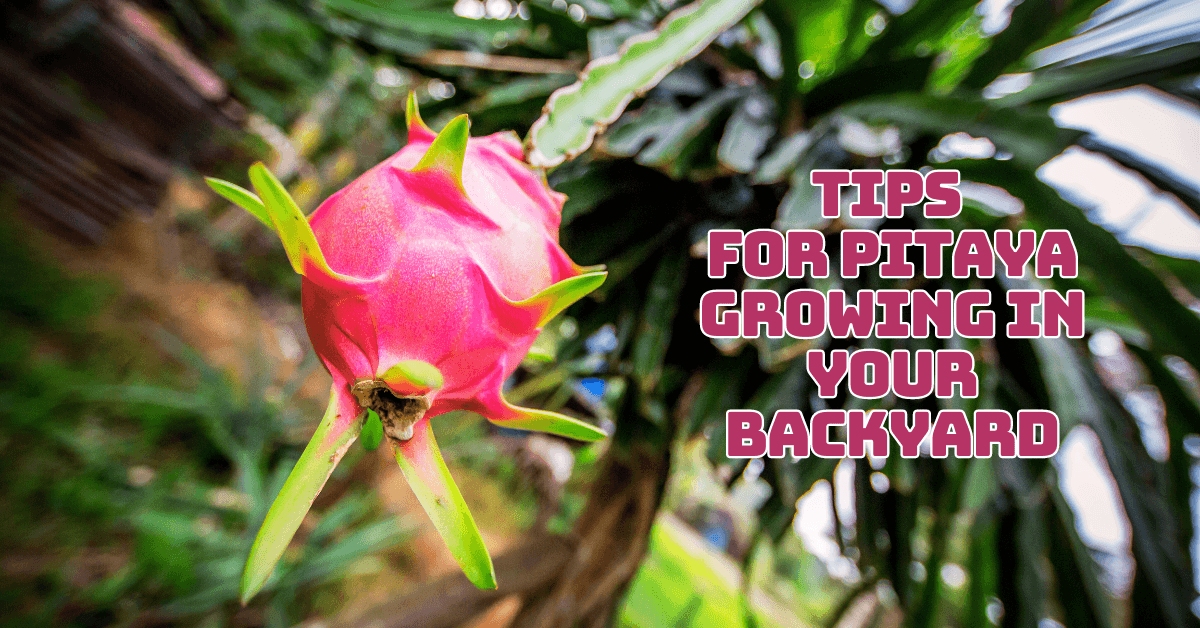Best Tips For Pitaya Growing In Your Backyard
Best Tips For Pitaya Growing In Your Backyard
An exciting way to enjoy this distinctive and nutritious fruit is to start pitaya growing pitaya, or dragon fruit, in your backyard. Pitaya is a cactus plant that thrives in warm, sunny climates.
It is known for its vibrant colour and sweet, slightly tangy flavour. With the right care and conditions, you can grow this exotic fruit at home, even if you are new to gardening.
This article will provide essential advice on Pitaya growing, care, and harvest to guarantee a fruitful and successful backyard garden.
Tips For Pitaya Growing In Your Backyard
Growing pitaya in your backyard can be a rewarding experience with the right approach. Here are some helpful tips:
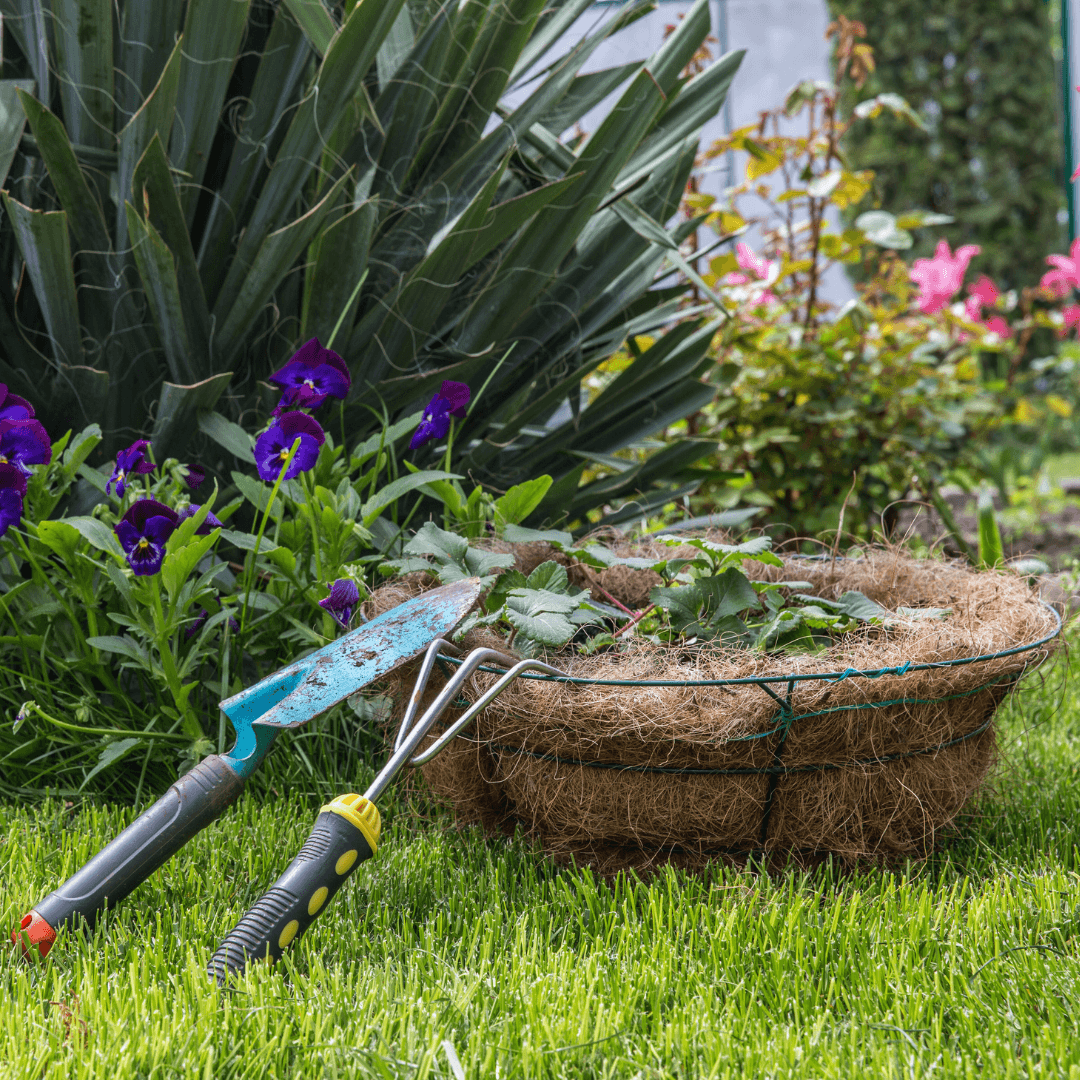
1. Location Matters For Pitaya Growing
For successful pitaya growing in your backyard, ensure the plant receives at least six hours of direct sunlight daily. Pitaya thrives in warm, sunny environments and originates from regions with abundant sunlight.
Growing healthily and producing fruit requires at least six hours of direct sunlight daily. Insufficient sunlight can stunt growth, affect flowering, and make poor fruit.
When selecting a location, choose a spot that receives full sun, particularly during the morning and early afternoon. Avoid planting pitaya in shaded or partially shaded areas, as it may not get enough light to flourish.
Planting pitaya near a south-facing wall or using a greenhouse in cooler climates can help maintain the necessary warmth.
Conversely, in extremely hot regions, providing light shade during the hottest part of the day can prevent sunburn on the plant.
2. Soil Choice For Pitaya Growing
Choosing the right soil is critical for successful pitaya growth. Well-draining soil is essential because pitaya, a cactus-like plant, cannot tolerate soggy conditions.
Excessive wetness might result in root rot and other fungal problems. To ensure good drainage, opt for sandy soil or a loamy mix that allows water to pass through quickly while still retaining some moisture. This helps the roots stay healthy without being waterlogged.
The soil's pH level should range from slightly acidic to neutral, around 6 to 7. This pH balance is ideal for nutrient absorption, ensuring the plant gets essential minerals like nitrogen, phosphorus, and potassium for robust growth. Plant health may suffer if the soil is excessively alkaline or acidic because it might impede the uptake of nutrients.
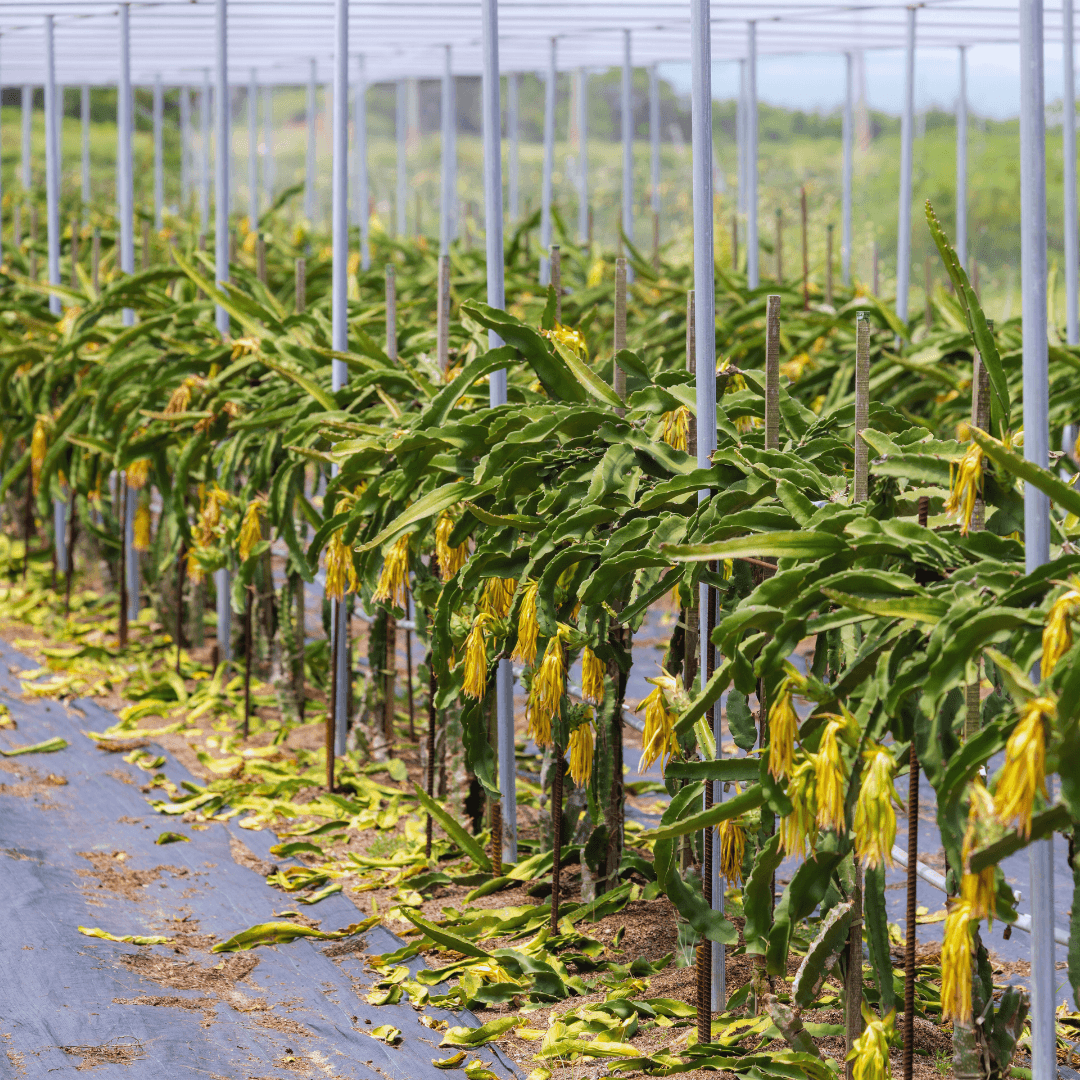
3. Support Structure For Pitaya Cacti
Pitaya plants are climbing cacti, and as they grow, they develop long, vining stems that need support to thrive. Without a proper support structure, the plant's growth can become uncontrolled, leading to damage and reduced fruit production. To keep the plant upright and healthy, providing a sturdy trellis, post, or frame for it to climb is essential.
A durable, weather-resistant trellis or post will guide the pitaya's stems as they grow, helping them reach sunlight more effectively and improving air circulation around the plant.
This reduces the risk of disease and makes the plant easier to manage. The structure also supports the plant’s weight as it starts to bear fruit, preventing stems from breaking under pressure.
4. Tropical Microclimate For Pitaya Growing
Creating a tropical microclimate can help pitaya thrive in cooler areas where temperatures might be unsuitable for this heat-loving plant.
A simple way to do this is by planting pitaya near a south-facing wall, which absorbs and retains heat during the day and gradually releases it at night. This additional warmth helps mimic the tropical conditions that pitaya prefers.
In addition to the heat from the wall, you can enhance light and warmth using reflective materials such as aluminum foil or white-painted surfaces.
These materials reflect sunlight onto the plant, increasing the light and warmth it receives, even in cooler environments.
This technique is especially useful when temperatures drop in early spring and late fall, but the plant still needs adequate heat to grow.

5. Watering Of Pitaya Plants
To prevent root rot and stunted growth, it is crucial to water your pitaya plants in moderation and let the soil dry out between applications.
Overwatering can lead to soggy roots, promoting root rot and fungal diseases, while underwatering may stunt growth. The key is to water moderately and allow the soil to dry out between watering.
Pitaya's cactus-like nature enables it to store water in its stems, so it doesn’t require constant hydration. Water the plant deeply but sparingly during the growing season, ensuring the top few inches of soil are dry before the next irrigation. In cooler months or periods of dormancy, watering is reduced further, as the plant requires less moisture.
6. Frost Protection Of Pitaya Cacti
Pitaya, also known as dragon fruit, is sensitive to frost and cannot tolerate freezing temperatures. In regions where temperatures drop significantly during winter, protecting your plant from frost is crucial to prevent damage and ensure its survival.
To safeguard the pitaya during colder months, use protective covers such as frost cloths or blankets to shield the plant from freezing temperatures.
These covers trap heat and provide insulation, reducing the risk of frost damage. Ensure the covers are secure and touch the ground to create a warm microenvironment around the plant.
Alternatively, if pitaya is grown in a container, consider moving it indoors during colder periods. Place it inside a bright, sunny location near a south-facing window to maintain adequate light levels.

7. Pollination Of Pitaya Plants
Pitaya, or dragon fruit, often relies on pollination for fruit production, but not all varieties are naturally pollinated by insects.
Some types, especially those grown in controlled environments or areas with limited pollinator activity, may require hand pollination to ensure fruit set. To hand-pollinate pitaya, use a soft brush or cotton swab.
Gather pollen gently from one flower's stamen and place it on the stigma of another. It's best to perform this task in the early morning when flowers are fully open and pollen is readily available.
For effective pollination, ensure you transfer pollen between flowers of the same variety. Some pitaya plants are self-pollinating, but others may need cross-pollination to produce fruit.
8. Night-Blooming Pitaya Flowers
Pitaya flowers are unique in that they bloom at night, typically for just one evening, and are often pollinated by bats, moths, or other nocturnal creatures.
You can plant night-blooming plants such as moonflowers, night-blooming jasmine, or evening primrose nearby to encourage these nighttime pollinators. These plants attract active pollinators at night, increasing your pitaya's chances of successful pollination.
You can also manually pollinate the pitaya flowers in the evening if you need more natural pollinators in your area or if consistent fruiting is required.
Pollen should be delicately moved from the stamen, or male portion of the flower, to the stigma, or female half, using a soft brush or cotton swab.
This method ensures that your pitaya receives the pollination it needs to produce fruit, especially in areas with limited bat or moth activity.
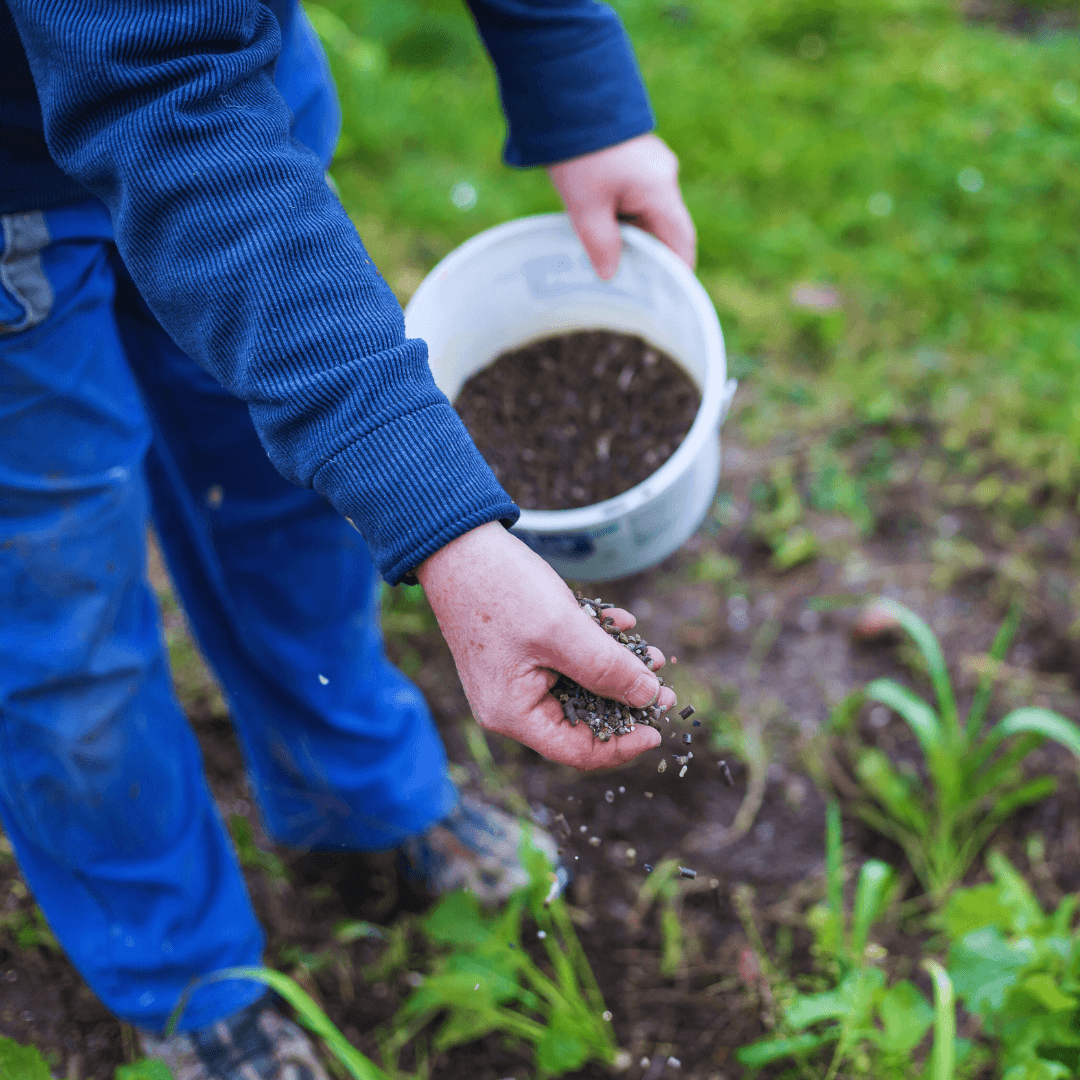
9. Fertilization Of Pitaya Or Dragon Fruit
Fertilization is essential for pitaya, or dragon fruit, to develop healthily and produce fruit. Important elements that support general plant health are provided by a balanced fertilizer, which has equal amounts of potassium (K), phosphorus (P), and nitrogen (N).
Add a balanced fertilizer every two months to encourage healthy development and fruit production. This will ensure your pitaya grows effectively in your backyard during the growing season.
Phosphorus helps with root development and blooming, potassium improves fruit quality and disease resistance, and nitrogen encourages the rapid growth of leaves and stems. Refer to the manufacturer's instructions for information on how much fertilizer to use and how to apply it.
You can also use natural fertilizers for your pitaya or dragon fruit.
10. Pest & Disease Management Of Pitaya Plants
Keeping your pitaya plant healthy requires effective pest management. Common pests such as ants and aphids can pose significant problems.
Ants often farm aphids for their honeydew, exacerbating the pest issue, while aphids themselves can weaken the plant by sucking sap and transmitting diseases. To control these pests, regularly inspect your pitaya for signs of infestation.
Consider using neem oil or insecticidal soap if you spot ants or aphids. A natural insecticide, neem oil shatters and repels bug life cycles.
Made from natural fats and oils, insecticidal soap attacks soft-bodied insects, such as aphids, without damaging the plant. As directed by the product label, use these treatments to cover the afflicted areas completely.
11. Pruning Of Pitaya Plants
Pruning is essential for maintaining your pitaya plant's health and productivity. Regular pruning helps manage the plant's shape, promote vigorous growth, and encourage fruit production.
To keep the plant looking tidy and prevent illness, start by removing any dead or broken stems. Thin down overloaded branches to enhance air circulation and light penetration. This will lower the chance of fungal diseases and encourage even development.
Trim back any long or overly expansive stems to keep the plant at a moderate size and motivate it to concentrate on fruit production.
By removing older stems, pruning can encourage new growth and produce more fruit and flowers. Prune the plant during the growing season, usually in late winter or early spring, before its active development phase.
12. Growing Pitaya In Containers
Pitaya thrives in containers, making it an excellent option for gardeners with limited space. However, it's crucial to ensure the huge pot used to plant pitaya has sufficient drainage to avoid water buildup at the roots, which can result in root rot. To encourage healthy growth, use a pot with drainage holes and a well-draining soil mix, like sandy or loamy.
Choose a container at least 15 to 20 gallons in size to provide enough space for the plant’s root system to expand. Pitaya needs lots of light to develop and bear fruit, so place the pot where it will get at least six hours of sunlight daily. Be mindful of the plant’s size, as pitaya can become large over time.
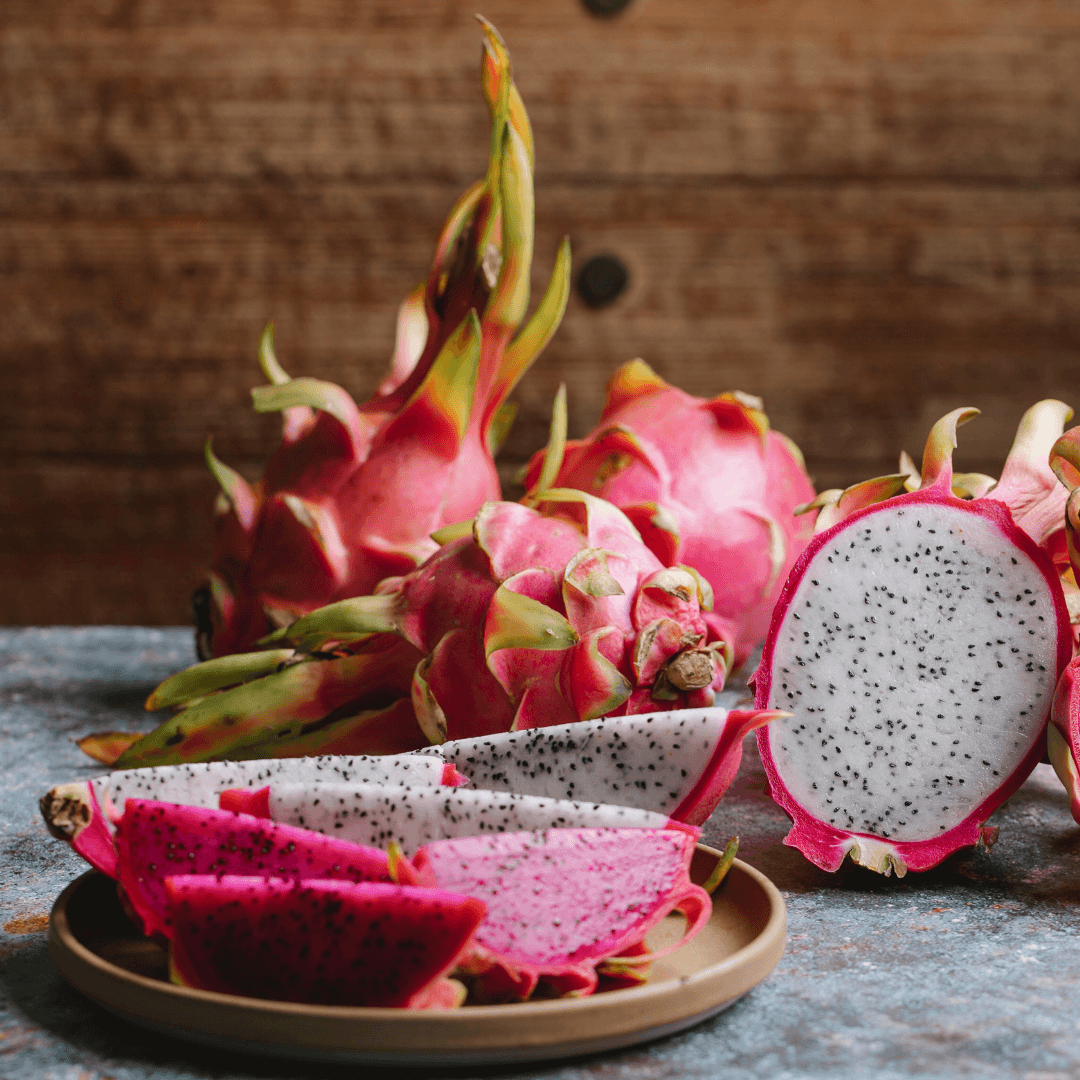
13. Growing Pitaya Requires Patience
Growing pitaya requires patience, as the plant typically takes a few years to reach maturity and bear fruit. While the growth process can be slow, it is important to stay consistent with care to ensure the plant develops healthily.
During the early stages, focus on providing optimal conditions, such as sufficient sunlight, well-draining soil, moderate watering, and periodic fertilization.
Pitaya plants generally start producing fruit after 2 to 3 years, but this timeline can vary based on climate, care, and plant variety.
Regular pruning and maintaining a sturdy support structure also contribute to the plant's health, encouraging faster growth. While waiting for fruit, continue tending to the plant and be patient.
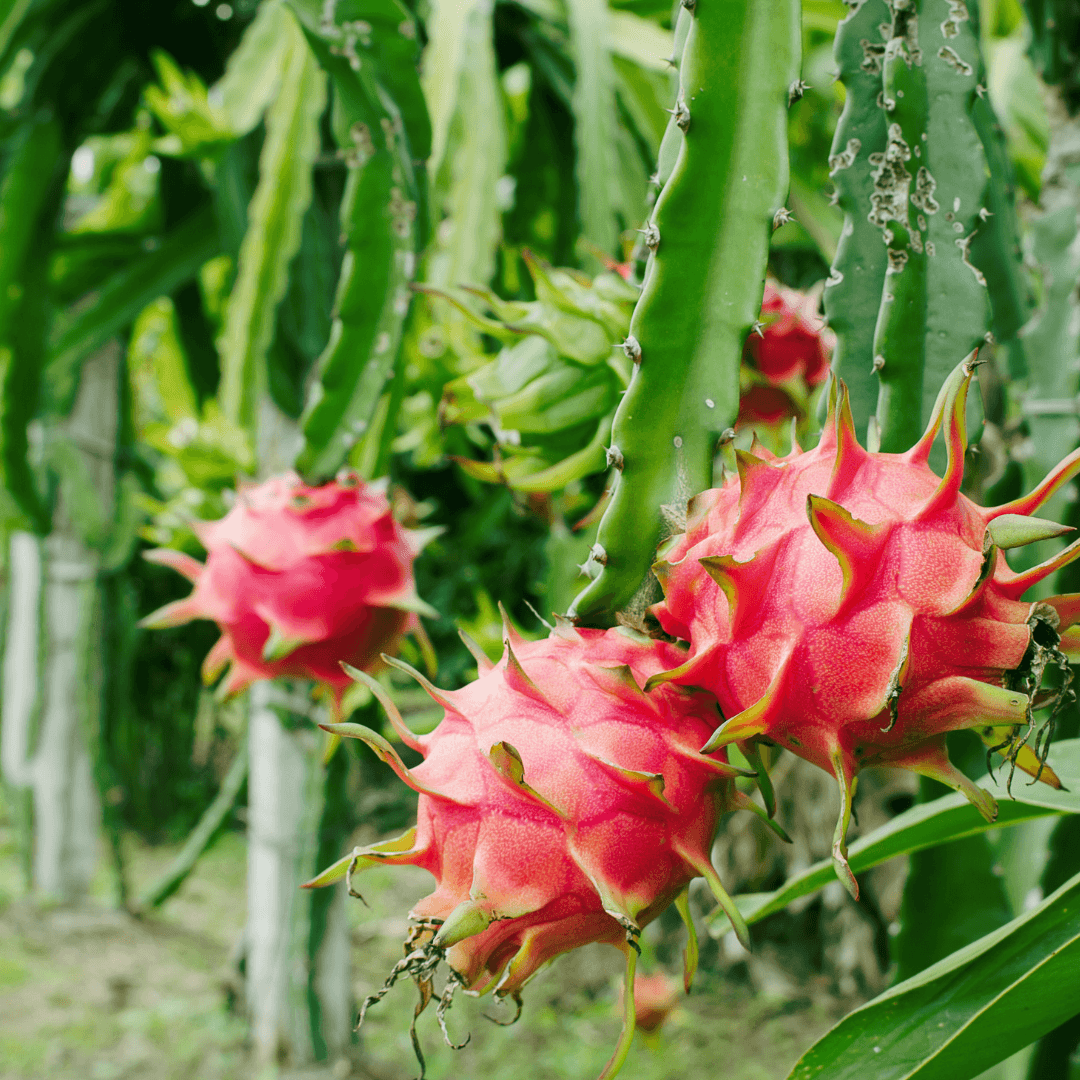
Ideas For Pitaya Trellis
To help your pitaya (dragon fruit) plants grow, try these trellis ideas:
1. Pitaya Trellis With One Post
A single 6- to 8-foot-tall wooden or metal post can be buried directly near the plant's base. To create a “T” shape, attach a horizontal crossbeam at the top, allowing the plant to grow over the crossbeam. This straightforward structure is simple to maintain and supports a single plant sufficiently.
2. Trellis Cage
Use sturdy metal or wire mesh to build a 5-6-foot-tall, 2-3-foot-diameter cylindrical cage. If the cage is placed around the plant, the pitaya will grow upward and out of the openings.
This method provides excellent air circulation and prevents the plant from sprawling by providing support from all directions.
3. Trellis With A-Frame
Construct an A-frame trellis using two slanted wooden or metal posts joined at the top to form an inverted “V.” Securing wire mesh or crossbars between the posts can provide climbing support. This layout works well for larger gardens because it lets multiple plants grow on either side of the frame.
4. Trellis At The Base
For pitaya growing in your backyard, a concrete or wooden pillar with horizontal arms at multiple heights provides solid support and mimics the plant’s natural climbing pattern.
Place horizontal arms at numerous heights to give the pitaya various anchor points as it climbs. This design is extremely long-lasting and imitates the pitaya's natural growth pattern in its native environment.
5. Fan Trellis For Pitaya
Attach horizontal wires or slats to a central post and fan outward and upward to create a fan-shaped trellis. The fan trellis is functional and attractive for pitaya cacti because they can ascend the central post and spread out along the fan-shaped wires.
6. Trellis On The Wall
If space is limited, consider mounting a trellis directly onto a wall. Train the pitaya to grow along a grid of wire or wooden slats attached to the wall.
This technique is perfect for patios or tiny gardens as it provides a beautiful aspect to your area. These ideas for trellises can support your pitaya plants, making it easier to manage them as they grow and start producing fruit.
7. Ladder Trellis
A ladder trellis is a simple yet effective support structure for pitaya vines. Placing a sturdy wooden or metal ladder vertically into the ground creates an ideal climbing frame for the plant.
The ladder's rungs provide multiple points for the pitaya's long, sprawling vines to latch onto as they grow upward. This setup offers strong support, keeping the plant upright while allowing plenty of space for healthy growth and air circulation.
8. Obelisk Trellis
An obelisk trellis is a visually striking and functional support structure for pitaya plants. It is constructed with four vertical posts that converge at the top, creating a pyramid-like shape.
This design provides excellent stability for the climbing vines and enhances the garden's aesthetic appeal. The wide base supports the plant’s growth, while the narrowing top encourages the vines to grow upward orderly.
9. Wire Trellis With Crossbars
A wire trellis with crossbars is an effective support system for pitaya, designed to accommodate its sprawling growth. Install vertical and horizontal wires stretched between two poles to create this trellis.
The vertical cables support the pitaya's climb, while the horizontal crossbars allow the vines to wrap around and spread out in both directions.
This setup promotes healthy air circulation around the plant, reducing the risk of diseases and improving light exposure.
FAQ
1. How Long Does A Pitaya Plant Take To Produce Fruit?
Pitaya plants grown from cuttings typically produce fruit in one to two years. Seeds may take 5-7 years to bear fruit.
2. Do I Need Multiple Pitaya Plants To Produce Fruit?
Some pitaya varieties can pollinate themselves without the help of another plant. However, if you have a variety that requires cross-pollination, you must manually pollinate the flowers or use another plant.
3. Can Pitaya Thrive In Frigid Environments?
The pitaya is sensitive to cold temperatures and frost. In colder climates, grow it in a pot that can be brought inside during the winter, or wrap the plant in frost fabric to protect it from freezing-related harm.
4. Can Pitaya Be Grown Indoors In Colder Regions?
Yes, you can grow pitaya indoors in large pots. Put it next to a bright window or cover it with grow lights to ensure it gets enough light and warmth.
5. What’s An Unconventional Way To Improve Soil For Pitaya?
Incorporate biochar into the soil. It enhances soil structure, retains moisture, and improves nutrient availability, creating a better-growing environment for pitaya.
6. Do I Need To Hand-Pollinate Pitaya?
Hand pollination may sometimes be necessary if natural pollinators like bats or moths are scarce. To move pollen from flower to flower, use a delicate brush.
Conclusion
Growing pitaya in your backyard is a rewarding journey that requires patience and dedication. From seed selection and soil preparation to trellising and pest management, each step brings you closer to harvesting your own exotic dragon fruit.
While it takes time for the plant to mature and bear fruit, the vibrant blossoms and eventual reward of sweet, unique fruit make it worthwhile.
Proper care ensures that Pitaya Growing transforms your backyard into a fruitful oasis, offering you a taste of the tropics at home.
I trust you enjoyed this article on the Best Tips For Pitaya Growing In Your Backyard. Please stay tuned for more blog posts soon. Take care!
JeannetteZ
>>>Please click here to read my all-inclusive article, About The Essential Companion Planting Guide<<<
>>>Please click here to read my all-inclusive article about Container Gardening<<<
>>>Are you interested in homegrown herbs and medicine? Please click here to find out more about it!<<<
Your Opinion Is Important To Me
Do you have thoughts, ideas, or questions? I would love to hear from you. Please leave me your questions, experiences, and remarks about this article, Best Tips For Pitaya Growing In Your Backyard, in the comments section below. You can also email me at Jeannette@Close-To-Nature.org.
Disclosure
This post may contain affiliate links. As an Amazon Associate and other affiliate programs, I earn from qualifying purchases at no extra cost to you. Please read my full affiliate disclosure.
You might also enjoy these blog posts:
Most Beautiful Birds In The World
The Complete Manual For Growing Pitaya From Seeds
Top Time Management Activities For A Productive Day

